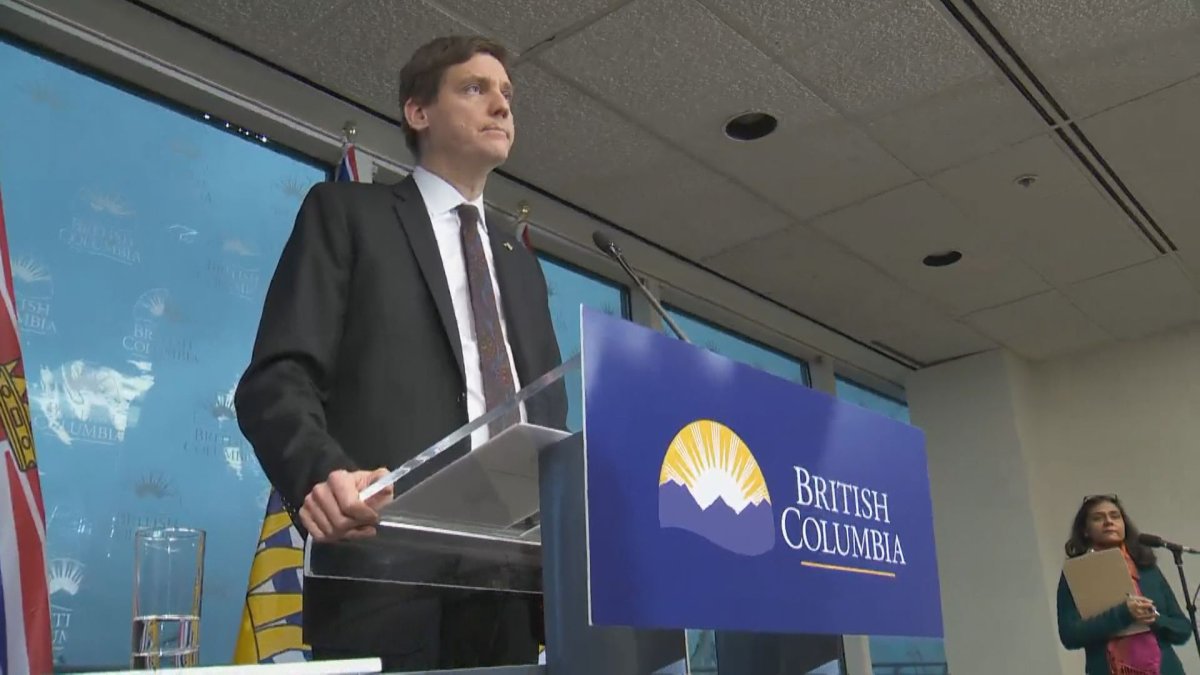If you spend any time on the roads they are hard to miss: bad drivers.

But what exactly is a bad driver? Starting on Monday, it’s the question the provincial government wants you to answer through a new public consultation campaign.
“The question we have is who’s a ‘bad driver?’ Is it one speeding ticket, two speeding tickets, is it three, is it speeding over a certain amount? Is it one distracted driving ticket? What does ‘a bad driver’ mean to most people,” said Attorney General David Eby. “I find generally people think they are a good driver and other people are a bad driver.”
WATCH: B.C. to cap ICBC pain and suffering payouts

The B.C. government is in the midst of an overhaul at ICBC and Monday’s new consultation will be focused on insurance rates. The province will be collecting and analyzing data collected from the public and experts to determine what sort of drivers should get a break on rates and which drivers should pay more.
The other issue is just how much more those bad drivers should pay.
“The more that bad drivers pay to reflect the risk they impose on the system, the more that is available for discounts to good drivers,” said Eby. “We want to get a sense of what people think is fair in terms of an additional cost.”
- Norad looking to NATO to help detect threats over the Arctic, chief says
- Alberta to overhaul municipal rules to include sweeping new powers, municipal political parties
- Grocery code: How Ottawa has tried to get Loblaw, Walmart on board
- Canada, U.S., U.K. lay additional sanctions on Iran over attack on Israel
Last month, the B.C. government announced a cap on payouts for soft body injury claims. By April 1, 2019, the province will only pay out a maximum of $5,500 for pain and suffering following a crash.
The changes at ICBC come as the provincial government is struggling to keep ICBC financial viable. The public insurer has projected a $1.3-billion loss in the 2017-18 fiscal year.
The head of Wallace Driving School, Steve Wallace, says the province should consider crash rate as a threshold, increasing the rates for those who are involved in ‘blamable’ crashes. Wallace also says a one-time offender is a higher risk of causing problems on the road.
“If a person gets one speeding ticket, they are much more likely to get a second speeding ticket,” said Wallace. “It is extremely important to give people the carrot, award those who are doing well, and double penalize those who are not.”
WATCH: Highlights from David Eby announcement to make ICBC financially viable

So far, ICBC isn’t looking at a single speeding ticket being enough to raise rates. But more than one ticket should start leading to higher premiums. Eby says there is also a movement towards shifting the risk away from car owners who lend their car to someone who gets in a crash. Currently, the the car owner is on the hook for rate increases, even if they are not driving.
“We need to consider attaching risk to the driver, not to the vehicle,” said Eby. “It is obviously going to have implications on the parents of 16 year olds, we want to make sure we are being fair about this.”
Currently, people with a record of impaired or distracted driving pay higher rates. Drivers that live in cities with low crash rates, like Victoria, pay less than drivers in higher crash-rate cities such as Metro Vancouver.
WATCH: ICBC faces huge losses

The province has avoided charging people more based on demographics, so 16-year-old boys pay the same as 16-year-old girls. Eby says they don’t plan on changing that, but there needs to be a better way to properly punish repeat offenders.
“This is where ICBC has really fallen down. They haven’t recognized people with decades of safe driving experience,” said Eby. “We wont’ take into account unchangeable characteristics. Instead it will be entirely focused on driver behavior.”
The public consultation will kick off on Monday. There is no timeline yet on when the province plans on increasing rates or by how much.




Comments